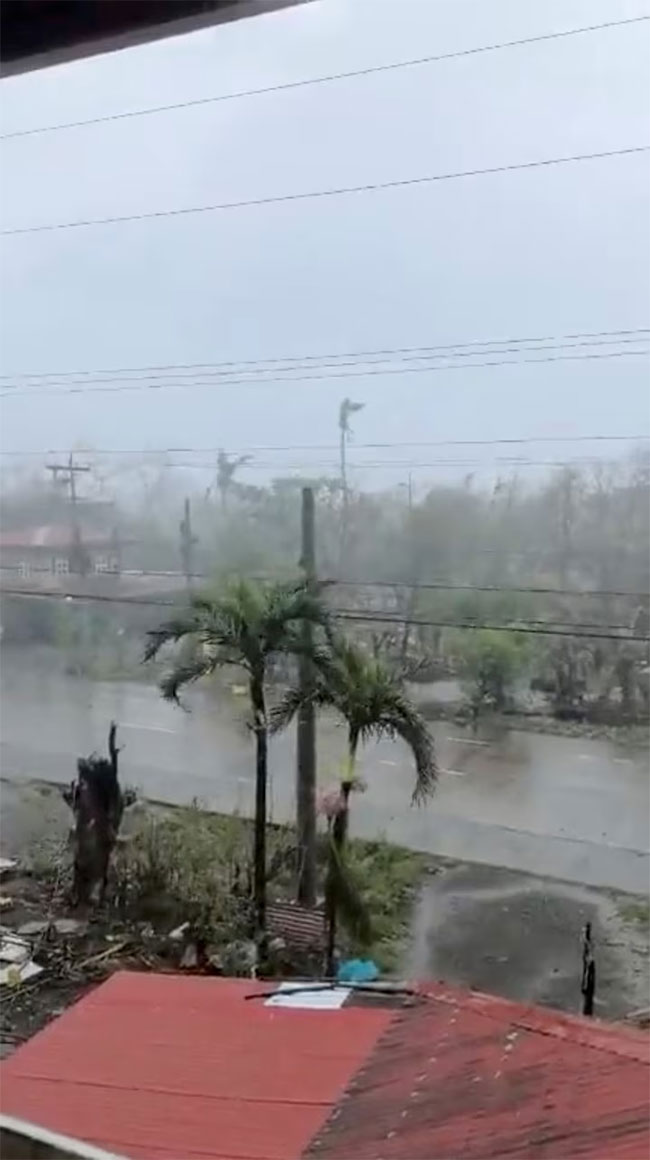Typhoon Man-yi Could Become a Super Typhoon, NASA Warns of Unusual Storm-on-Storm Phenomenon
The Philippine Atmospheric, Geophysical and Astronomical Services Administration said Tropical Storm Man-yi (Pepito) could strengthen into a super typhoon by the evening of November 16. NASA is also warning that the string of simultaneous storms and cyclones near the Philippines this November is an "unusual" phenomenon.

The Philippine Atmospheric, Geophysical and Astronomical Services Administration said tropical storm Man-yi (Pepito) continued to strengthen and could become a super typhoon by the evening of November 16. (Photo: Reuters).
Typhoon Man-yi could make landfall at peak intensity. As of 4 a.m. on November 15 (local time), Man-Yi had maximum sustained winds of 110 km/h and gusts of up to 135 km/h. The storm was moving west at 25 km/h. Meanwhile, Typhoon Usagi (Ofe) began to weaken as it moved across the Luzon Strait early on November 15.
On November 14, NASA shared an earlier satellite image showing a series of tropical storms (Marce, Nika, Ofel, and Pepito) lining up in the western Pacific Ocean . In an unusual sight, four storms were moving simultaneously in the western Pacific in November 2024, according to NASA. The Japan Meteorological Agency reported that this was the first time since 1951 that so many storms coexisted in the Pacific basin in November.
The typhoon season in the Western Pacific lasts all year, but most storms form between May and October. November typically sees three named storms, one of which becomes a super typhoon, based on the 1991-2000 average. Typhoons on top of typhoons have caused widespread damage in the Philippines, killing 159 people. The United Nations has appealed for $32.9 million in aid for the worst-hit areas in the Philippines.
- The 10 biggest storms recorded in history
- Big storms destroy the world
- Super typhoon storm and a strange phenomenon called Fujiwhara
- Super storm Meranti landed, Taiwan was deserted
- NASA ship is about to approach super typhoon 16,000km wide on Jupiter
- Typhoon Haiyan is heading into Quang Ngai
- Millions of Indians face the biggest storm in decades
- Super typhoon Mangkhut is on a par with the super typhoon Haiyan
- Horror image of the strongest storm of the year seen from the universe
- Hanoi plans to respond to super typhoon Mangkhut
- 9 storms occur at the same time, experts warn of 'abnormal'
- Storm Koppu jerked level 17 headed for the East Sea
 Is the magnetic North Pole shift dangerous to humanity?
Is the magnetic North Pole shift dangerous to humanity? Washington legalizes the recycling of human bodies into fertilizer
Washington legalizes the recycling of human bodies into fertilizer Lightning stone - the mysterious guest
Lightning stone - the mysterious guest Stunned by the mysterious sunset, strange appearance
Stunned by the mysterious sunset, strange appearance